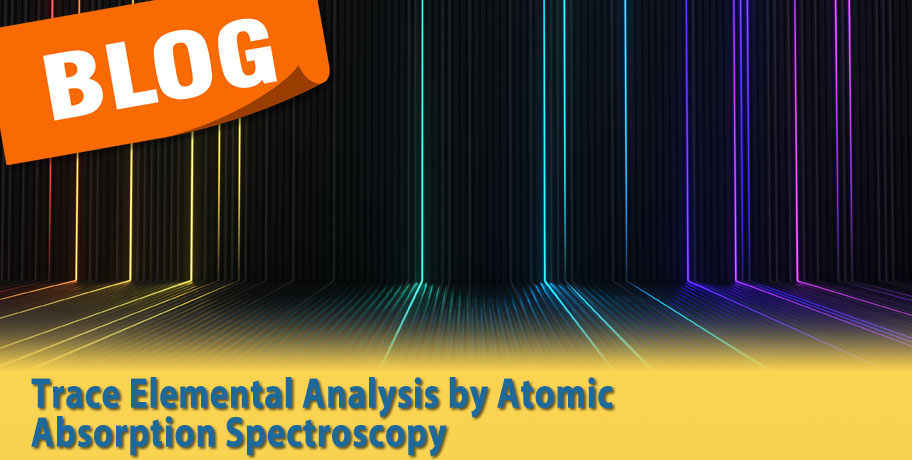What’s my exposure risk to heavy metals such as lead, antimony, beryllium, chromium, arsenic, cadmium, and mercury?
Read MoreTeledyne Leeman Labs Blog
Trace Elemental Analysis by Atomic Absorption Spectroscopy
Posted by Sara Kennedy on Jan 23, 2023 4:17:03 PM
Trace elemental analysis
Teledyne Leeman Labs has specialized in trace elemental analysis for over 40 years. With initial success in Inductively Coupled Plasma-Atomic Emission Spectroscopy (ICP-AES), also referred to as Inductively Coupled Plasma-Optical Emission Spectroscopy (ICP-OES), Teledyne Leeman Labs went on to develop innovative product lines. Those included branching out into various elemental analysis techniques, including DC Arc and Mercury Analysis. Our elemental analysis instruments can be found in laboratories across the world, providing service to a range of industries. From agriculture to aerospace and food to forensics, Teledyne Leeman Labs is dedicated to providing world-class instruments for trace elemental analysis.
Figure 1: Atomic Spectra for mercury (Hg), Copyright © Richard Pogge, All Rights Reserved
Atomic absorption spectroscopy
Atomic absorption spectroscopy (AAS) is one of the first commercially available elemental analysis techniques. This tried-and-true method remains a top choice for its simplicity and reliability.
Read MoreTags: Hg analysis, Atomic Spectroscopy
The Benefits of Cold Vapor Atomic Fluorescence (CVAF) Spectroscopy for Mercury Determination
Posted by Sara Kennedy on Sep 14, 2022 2:50:00 PM
Cold Vapor Atomic Florescence Spectroscopy (CVAF)
In contrast to most cold vapor atomic absorption (CVAA) systems, the desirable characteristics of CVAFS-based mercury analyzers include:
Why Testing Mercury in Wastewater and Drinking Water Is Important
Posted by Sara Kennedy on Aug 23, 2022 5:54:21 PM
Factsheet and Understanding the Importance of Testing Mercury in Wastewater
What is Wastewater and Why Treat it?
Wastewater is made of all ‘used’ water. Its composition ranges widely from grey water produced in homes and businesses to runoff into storm drains. It also includes sewage sludge and industrial process waste. Wastewater contains any number of substances including chemicals, soaps, food scraps, oils, and human waste. Read MoreTags: Mercury in Wastewater
Who are the employees of Teledyne Tekmar/ Teledyne Leeman Labs - Aaron Keller
Posted by Teledyne Leeman Labs on Aug 10, 2022 8:20:21 AM
With today’s blog, let’s get to know the employees of Teledyne Tekmar/Leeman Labs. The next person I would like to introduce you to is Aaron Keller.
Aaron is the Leeman Labs Quality Control Chemist for the Mercury product line. He will be approaching his first full year of working Teledyne here soon.
Let's learn more about Aaron.
Read MoreWho are the employees of Teledyne Tekmar/ Teledyne Leeman Labs - Sara Kennedy
Posted by Teledyne Leeman Labs on Aug 1, 2022 4:47:09 PM
With today’s blog, let’s get to know the employees of Teledyne Tekmar/Leeman Labs. The next person I would like to introduce you to is Sara Kennedy.
Sara is the Applications Chemist for Teledyne Leeman Labs. She is an expert in mercury analysis using the Quicktrace® and Hydra II product lines. She is responsible for the overlap between marketing and chemistry. Sara helps develop analytical methods for testing customer samples, provides technical input during sales calls, and provides guidance about all thing’s mercury analysis. Sara has been with Teledyne Leeman Labs for 3 years. She was previously the Quality Control Chemist for the Teledyne Leeman Labs product lines. She is also responsible for the Hydra II C catalyst production.
Let’s ask Sara some questions to get to know her better.
Read MoreIn this edition of the blog, we will continue to examine various methods of sample preparation.
Dry Ashing
Samples containing a high percentage of organic matter (biologicals and foodstuffs, for example) can be prepared by a procedure known as "dry ashing" With this technique, an amount of sample is heated in a crucible over a flame or in a muffle furnace. The use of a muffle furnace is preferred as it permits greater control of the temperature. The sample residue is then dissolved, and the analysis is performed.
Read MoreMercury Testing in Water and Health Effects of Mercury in Drinking Water
Posted by Sara Kennedy on Jul 8, 2022 4:04:51 PM
Mercury Testing in Water and Health Effects of Mercury in Drinking Water
How does mercury get into drinking water supplies? How do we know when our drinking water is polluted? How does mercury contamination impact human health? In this blog we will focus on the sources of mercury in the environment, discuss health risks associated with mercury exposure, examine water treatment for mercury, review existing regulation designed to monitor and mitigate mercury and highlight Teledyne Leeman Labs’ role in manufacturing analyzers that test for mercury in water samples.
Read MoreTags: mercury
What Is ICP Heavy Metal Analysis?
Heavy metals, including arsenic (As), cadmium (Cd), chromium (Cr), lead (PB) and mercury (Hg) occur naturally in nature, and in low concentrations pose little health risk. When concentrations increase however, their presence can be toxic to plants, animals and humans. Because they are systemic toxins, routine testing is used to determine their presence and concentration. The United States Environmental Protection Agency (U.S. EPA), and the International Agency for Research on Cancer (IARC), classifies these metals as either “known” or “probable” human carcinogens.1
Read MoreTags: ICP-OES, Heavy Metal Analysis
Inductively Coupled Plasma Optical Emission Spectrometry (ICP-OES) Overview and Components - Part 2 of 2
Posted by Manny Almeida on Jun 27, 2022 8:58:00 AM
This is part 2 of the Inductively Coupled Plasma Optical Emission Spectrometry series. Part 1 described what ICP-OES is and how it works. Part 2 will be an overview and cover some of the components.
Overview
Inductively Coupled Plasma Optical Emission Spectroscopy (ICP-OES) is a multi-element, trace-analysis technique used to measure the concentration of various elements in a variety of sample matrices. Also known as Inductively Coupled Plasma Atomic Emission Spectroscopy (ICP-AES), the technique is capable of measuring the majority of the elements in the Periodic Table and is currently one of the most widely used methods for elemental analysis today.
Read More









